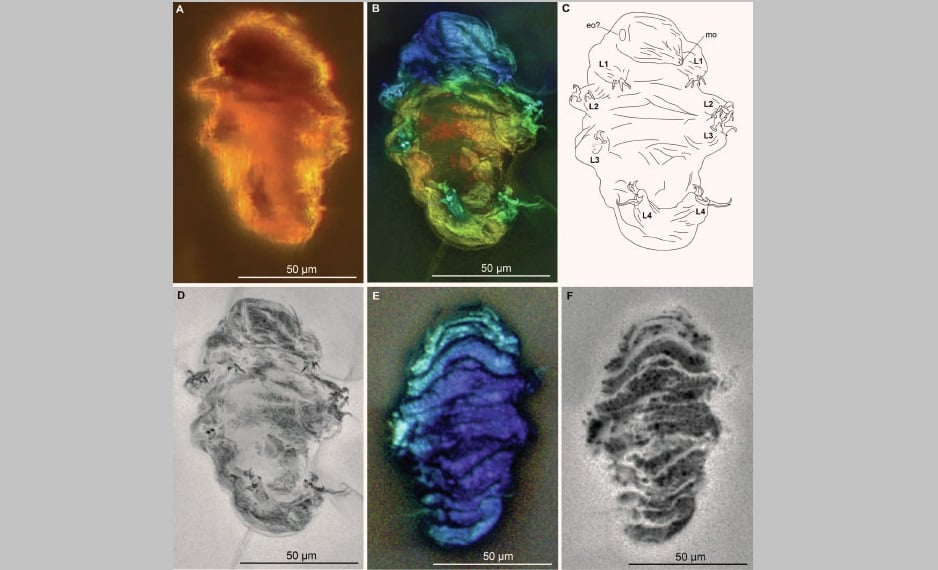(NLDO) - A new ancient species, the ancestor of the "immortal monster" tardigrade, has just been identified in a piece of Cretaceous amber.
A new species of "immortal monster" named Aerobius dactylus has just been identified by scientists inside a piece of amber found in Canada in 1960.
According to Sci-News, the piece of amber was identified as being from the Cretaceous period (145-66 million years ago), and the ancient monster inside it was identified as a tardigrade, the "immortal monsters" that can be said to be the longest-lived on earth.

New "immortal monster" species in amber - Photo: Communications Biology
First discovered in 1773, tardigrades are a diverse group of microscopic invertebrates known for their ability to survive in extreme conditions.
Recent studies show that it can desiccate itself, hibernating for decades when its environment is dry, only to quickly revive, feed, and reproduce when conditions are more favorable.
This species can even withstand deadly radiation in the interstellar environment.
They are also suspected of invading the Moon after "hitchhiking" with the Israeli spacecraft Beresheet in 2019 and possibly several others.

Two tardigrade species in Canada - Photo: Franz Anthony
There has been an idea to take advantage of some of this species' "immortality" genes and insert them into the human genome so that astronauts can undergo interplanetary travel without being harmed by radiation.
With great potential in science, finding out the secrets of the evolution of these little monsters is of great interest.
Aerobius dactylus is a very interesting find.
According to Dr. Javier Ortega-Hernández from Harvard University (USA), co-author, in the amber piece where the new species was revealed, there was another tardigrade species, Beorn leggi, with 7 well-preserved claws and a body very similar to modern species.
“The second specimen, Aerobius dactylus, had similarly long claws on each of the first pair of legs, but longer outer claws on the fourth pair,” the authors said.
Both species serve as important calibration points for so-called molecular clock analyses, which help scientists estimate the timing of important evolutionary events.
For example, recent findings suggest that modern tardigrades may have diverged during the Cambrian period more than 500 million years ago.
The study also sheds light on the evolution of this animal's "immortality" ability.
Scientists believe they began evolving special adaptations during the Paleozoic era (542-251 million years ago), which helped them survive the end-Permian extinction, which also ended the Paleozoic era.
Apparently that ability was preserved and gradually evolved, so this creature has survived to this day with a "portrait" that is not much different.
Source: https://nld.com.vn/ho-phach-thoi-khung-long-tiet-lo-ve-quai-vat-xam-lang-mat-trang-196240825090046766.htm

























































![[Maritime News] Wan Hai Lines invests $150 million to buy 48,000 containers](https://vphoto.vietnam.vn/thumb/402x226/vietnam/resource/IMAGE/2025/6/20/c945a62aff624b4bb5c25e67e9bcc1cb)














![[Infographic] Party Committee of the Ministry of Culture, Sports and Tourism: Marks of the 2020 - 2025 term](https://vphoto.vietnam.vn/thumb/402x226/vietnam/resource/IMAGE/2025/6/22/058c9f95a9a54fcab13153cddc34435e)

























Comment (0)